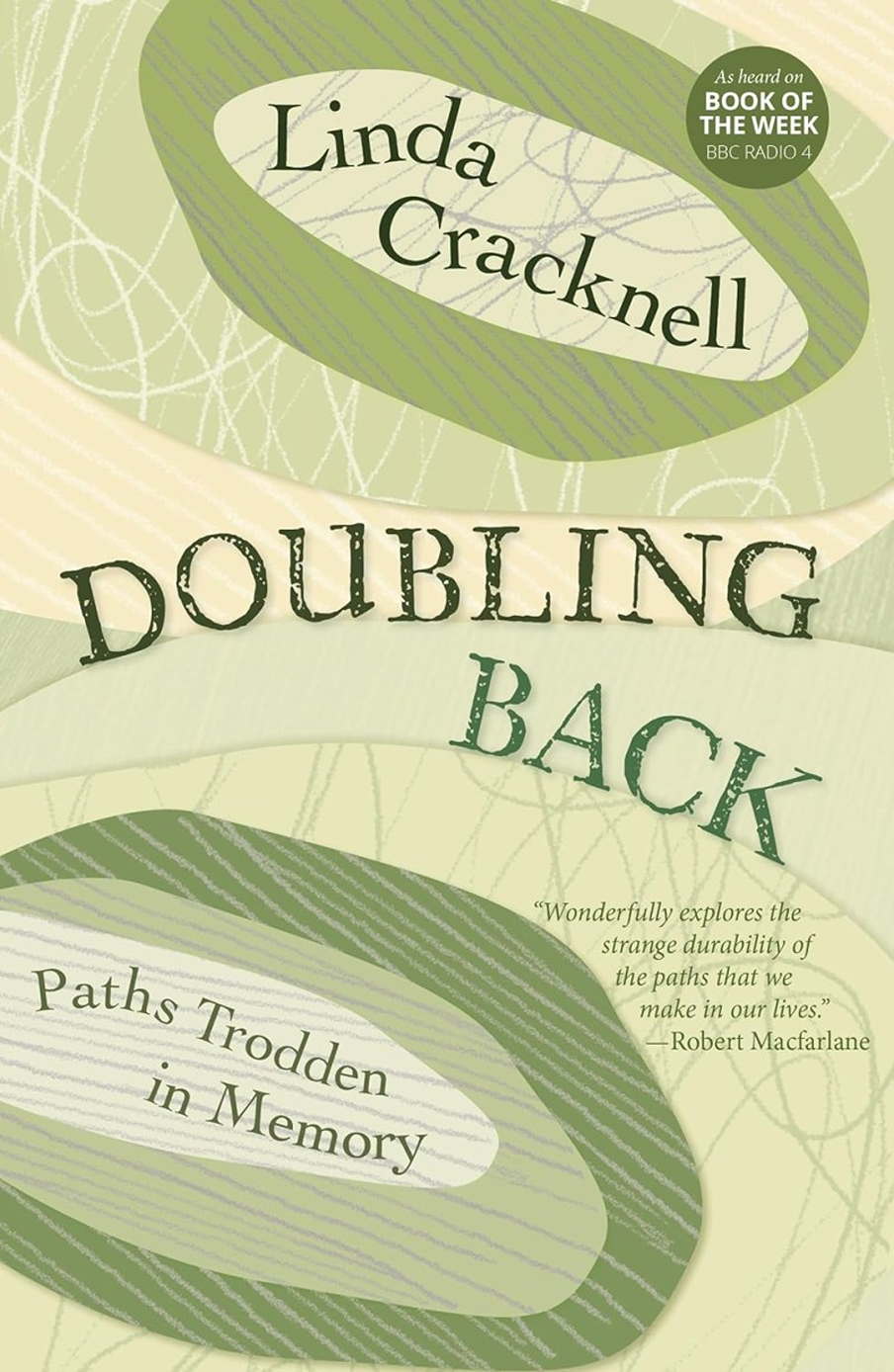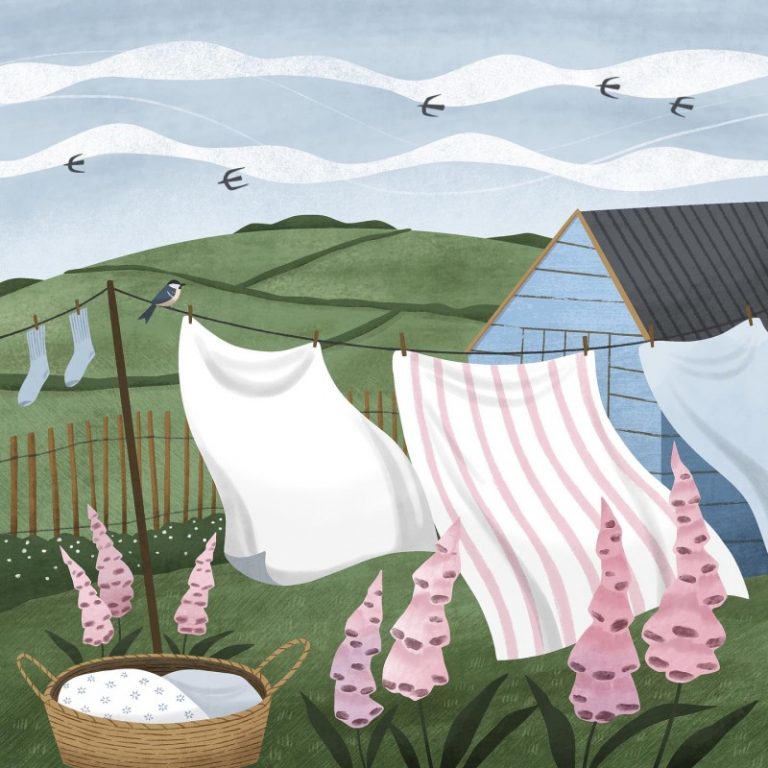
Walking pilgrimages often retrace steps of the saints, helping to feel closer to God. If you can’t make it this year, take an armchair one instead!
Wayfarer is a highly-reviewed book, from a young woman who quit her dream job, ended a long-term relationship and headed home to North Wales, before deciding to walk the most famous pilgrimage in the world – Camino de Santiago in northern Spain.
She then almost by accident found herself walking some of Britain’s oldest pilgrim paths, ending up confronting pasta traumas, that she thought she had laid to rest.
Not a religious book, it shows how a walking pilgrimage had Phoebe revisit the feelings of losing her mother as a teenager to surviving toxic relationships, an eating disorder and depression.
She reveals how nature and walking helped to heal past wounds, offering a path that she did not existed.
Great Pilgrim Routes of Britain & Europe looks at 10 pilgrim routes on the continent. The cathedral at Santiago de Compostela now records 200,000 visitors a year, on the famed pilgrim route through France and Spain. This book visits the classic route, along with nine others.
From England’s own St Cuthbert’s Way (which winds through the holy island of Lindisfarne and across the Scottish borders) to an historic route in Germany and Via Francigena (from Italy to Switzerland).
The Camino de Santiago, or Way of St James, started as a medieval pilgrimage. The aim was to reach the tomb of St James in Santiago de Compostela.
While many think of the Camino Francés, there are actually many recognised routes. The Francés runs from the French border, crossing northern Spain.
There’s also the Camino Portugués from Lisbon or Porto, and the Camino del Norte which hugs the coast. Whether you want mountains, farmland or towns, there’s a route to suit your taste.
Always follow the Countryside Code, to keep all creatures safe.
A Book Retracing Walking Paths of Others
Doubling Back is an updated edition of a classic book published 10 years ago, as the author ‘doubles back’ to follow in the footsteps of others, walking paths across the ‘holy island’ of Lindisfarne in Northumberland, the Isle of Skye, Norway and Kenya.
Following paths of writers and relatives gone before, Linda charts how places in writing and memory create ‘wrinkles in time’ and geography that allow us to walk in the footsteps of others.
Join her, as she cross the Swiss Alps to retrace the mountaineering past of the father she barely knew, follows the escape route of a Norwegian scientist on the run in the Second World War, of simply celebrate the joy found in ‘friendly paths’ of her local regular terrain, and the ritual of returning home.
This revised edition includes an account of a new journey through northern Scotland’s Flow Country (the peatland that is our chief carbon store).
I’m here on a writing retreat, and each day for a month is my own. Already I have established rituals. I like to be first to the kitchen, to collect the fresh loaves left hanging on the little side door that opens onto the village street.
After a glass of orange juice, I put on my shoes and slip into the garden, pass the lavender bushes fussed over by small white butterflies and scrambling with bees. At the bottom of the sloping lawn, a wicket gate opens into the wider world.
Linda Cracknell is a writer on the natural world, and also writes radio scripts. This book was serialised for BBC Radio. All her writing is inspired by place, and she also teaches nature writing.
Wonderfully explores the strange durability of the paths that we make in our lives, in our dreams and after our deaths. Robert Macfarlane
Not so much a book to inspire you to do her walks, but to challenge you to enjoy your own walks more. Sara Maitland
The Holy Island of Lindisfarne
One of the walks profiled in this book is the Holy Island of Lindisfarne, one of those rare places that speak to both the heart and senses.
Off the coast of Northumberland, the island blends history, spirituality and raw natural beauty into a single, unforgettable experience.
The tides control access, giving Lindisfarne a rhythm all of its own. Whether you come for the ancient ruins, the quiet landscapes or the feeling of calm that settles over you, Lindisfarne leaves a mark that’s hard to shake.
It’s a place where you can slow down, breathe deeply and remember what matters most.
The Unique Tidal Causeway
Access to Lindisfarne depends entirely on the sea. Twice each day, the road from the mainland disappears beneath deep water, only to re-emerge a few hours later. This tidal causeway shapes every visit, inviting you to step away from routine and surrender to the natural world.
Crossing at the safe times feels like entering a secret world, cut off from the mainland and the noise that comes with it. The causeway itself offers striking views in all directions, and for many, the journey is as memorable as the destination.
Always check the tidal causeway times, to avoid getting stranded.
Lindisfarne Priory: Heart of Early Christianity
The ruins of Lindisfarne Priory tell the story of Christianity’s arrival in northern England. Founded in AD 635 by Saint Aidan, the priory became a centre of faith and learning. It also saw the first major Viking raid in 793, which shook the island and left a deep mark on England’s history.
Today, the arches and carved stones speak of a long-lost grandeur. Walking among these ruins, you sense the endurance of hope, belief and dedication across centuries. The priory feels like a monument to the strength and resilience of the people who built and preserved it.
The Lindisfarne Gospels are among the most celebrated works of medieval art, painstakingly illustrated here on the island around the year 700. The manuscript is a true treasure, rich with colour, beauty and meaning.
These gospels symbolise the island’s role as a centre for faith, creativity and learning. While the real manuscript is held at the British Library in London, the spirit of its makers lingers here. Exhibits in the village share the story and let you glimpse the care and devotion behind every page.
Lindisfarne isn’t just about history, it’s alive with natural wonders too. The surrounding mudflats, salt marshes and dunes are a haven for birds and other wildlife. The Lindisfarne National Nature Reserve draws birdwatchers from all over the world, especially when thousands of Arctic and wildfowl migrate in for the winter.
Seals bask on the sandbanks, butterflies flutter through the grass and the ever-changing light brings new beauty every hour. Wherever you look, you’re reminded that healing and peace can be found in the quiet movements of nature.
A Modern Pilgrimage Across Britain

On This Holy Island follows travel writer Oliver Smith, as he seeds to radically reframe our idea of ‘pilgrimage’ by retracing sacred routes from across time – from climbing into remote sea caves, sleeping inside Neolithic tombs, scaling forgotten holy mountains and once marooning himself at sea.
Following holy roads to churches, cathedrals and standing tones, this book explores how even football stadiums and musical festivals, are now contemporary places of pilgrimages.
And although the routes walked are often ancient, the pilgrims he meets today are always modern. But wherever you go and whoever you meet, ‘the unravelling of a path, goes in tandem with the unravelling of the soul’.
Oliver Smith is an acclaimed travel writer, who won an award while working for Lonely Planet. Today he wishes to reframe what we mean, by the word ‘pilgrimage’, bringing the benefits into the 21st century.
Catholic pilgrimages have deep roots in England, linking faith with heritage and offering a strong sense of belonging. Whether you’re drawn by history, faith, or the wish to connect with something bigger than yourself, these holy sites welcome all who visit.
They range from ancient cathedrals to peaceful countryside shrines, each with its own story and sense of place. Here’s a guide to some of the most treasured Catholic pilgrimages across England, where you’ll find community, reflection, and maybe even a little inspiration.
Walsingham: England’s Nazareth
Walsingham is often called England’s Nazareth, and for good reason. This tiny village in Norfolk has drawn pilgrims for nearly a thousand years. Founded after a vision in 1061, the Shrine of Our Lady of Walsingham became a major destination in medieval times, standing side by side with sites like Rome and Santiago de Compostela.
Although the original shrine fell during the Reformation, both Catholic and Anglican shrines now attract thousands, especially for the annual pilgrimages in spring and summer. Its winding lanes, lovely chapels, and the sense of shared history make Walsingham feel both humble and holy.
Aylesford Priory: Home of the Carmelites
The Priory at Aylesford in Kent stands on the banks of the River Medway and is a living monastery. The Carmelites first arrived here in the 13th century, bringing with them a tradition of prayer and welcome. Today, pilgrims come to pray, join retreats, and take part in outdoor liturgies.
The grounds shine with sculpture, stained glass, and gardens, all maintained by the resident friars. Aylesford’s blend of beauty, peace, and openness makes it a strong favourite for families, parish groups, and those looking for a gentle space to pause.
Holy Island of Lindisfarne: Northumberland
Lindisfarne, often called Holy Island, sits just off the Northumberland coast, linked to the mainland only at low tide. Its early Christian community helped spread the faith across northern England. Pilgrims now cross the sands, following the ancient route marked by poles, to reach a small, quiet island with windswept ruins and the little church of St Mary.
The walk itself has a ritual feel, connecting you to centuries of devotion. Lindisfarne remains a symbol of faith’s power to endure, whatever the tide brings.
Always check tidal times, due to a tidal causeway, to avoid being stranded.
Tyburn Convent and Martyrs’ Shrine
Tyburn Convent sits near Marble Arch, a bustling patch of central London, but inside you’ll find a deep quiet linked to brave history. This is the resting place of over a hundred Catholic martyrs who died for their faith at Tyburn Tree from the 16th to 17th centuries.
The convent chapel today holds their relics and tells their stories, offering Mass and regular guided tours. Pilgrims come to honour courage and faith, but also for the sisters’ hospitality and prayer.
Oscott College: Remembering English Martyrs
Oscott College in Birmingham is home to the national shrine of the English Martyrs, many of whom gave their lives during some of the Church’s most troubled times in England. The chapel’s soaring windows and carved figures create a setting fit for silence and prayer.
Pilgrims, school groups, and parish communities gather here every year to honour those who held firm when times were hard. The college hosts open days, special liturgies, and guided tours that help visitors connect with this legacy.
Downside Abbey: The West Country
Set in Somerset’s green hills, Downside Abbey is one of England’s largest Catholic churches. The Benedictine monks keep up a rhythm of prayer, education, and welcome. The Gothic church’s soaring nave, relics, and liturgies draw visitors seeking a space filled with both grandeur and peace.
Downside offers regular guided tours, music events, and spiritual retreats. Pilgrims always find a warm greeting whether they come for a quiet afternoon or an organised pilgrimage.
Littlemore: Just Outside Oxford
Littlemore, just outside Oxford, is where St John Henry Newman was received into the Catholic Church in 1845. The modest buildings, now cared for by the Sisters of the Work, include Newman’s simple chapel and study.
Pilgrims explore the site and reflect on the power of questions, doubt, and faith in Newman’s journey. Visitors are welcome to pray, join guided visits, or stay for quiet days. The atmosphere at Littlemore is both personal and universal, touching doubts and hopes that many share.
St Edmund’s Shrine: Bury St Edmunds
St Edmund was king and martyr, and made Bury St Edmunds a centre for medieval pilgrims. Although his abbey now stands in ruins, the Catholic church nearby holds relics and keeps his story alive.
The parish church is a point of pride for the local Catholic community, hosting pilgrimages and special events throughout the year. The site connects today’s pilgrims with the rich memory of early English saints and their enduring witness.
The Rosary Shrine: Willesden, London
The Rosary Shrine sits in north-west London, within the church of St Dominic’s. Known for its rich tradition of prayer, its beauty, and its open doors, the shrine is a magnet for those who find strength in the rosary.
Each chapel within traces the mysteries of the rosary, offering plenty of spaces for reflection and prayer. The shrine hosts regular events, processions, and family-friendly pilgrimages. It’s a unique chance to experience Catholic tradition in the heart of London’s busy streets.
A Book on The World’s Holy Places

Holy Places looks at how pilgrimages have changed the world. For thousands of years, pilgrimages have been walks of faith and sometimes political acts.
The author follows the trail through 19 sacred sites, from the templates of Jerusalem to the banks of the River Ganges in India, by way of Lourdes in France.
Author Kathryn Hurlock is head of history research and reader in medieval history at Manchester University. A religious historian, she has written for many publications.
Do People Get Cured at Lourdes (France)?

The best known pilgrimage site in the world is likely the French town of Lourdes, where many sick or disabled Catholics visit the shrine, in the hope of miraculous cures? Of course, the question is do they? And if someone does get cured, why don’t all the others?
Situated at the foot of the Pyrenees mountains, the town itself has just 15,000 people but around 5 million people visit each year, in the hope of receiving a miracle cure.
It is here that it’s said the Virgin Mary appeared in a vision to a young teenage peasant girl who was eventually made into St Bernadette by the Pope.
She had several visions near a well (which is where people visit to bathe or drink the waters). And although she herself died young from TB, her body was exhumed more than once, with people amazed that she was almost mummified, rather than her body decomposed.
Since the visions at Lourdes, there have been some confirmed ‘miracles’ at Lourdes, but only 70 (not many considering the millions of people who visit). Others say that it is the faith and prayer, rather than the water, that may have helped.
Critics say that the huge prices charged to often vulnerable families with children in wheelchairs for life, has made a mockery of religion. The town generates almost £300 million in profits, often for luxury hotels.
The so-called ‘Disneyland of God’ the town sells glow-in-the-dark statues of the Virgin Mary along with plastic bottles of ‘healing water’.
Other Catholic Holy Places
Visiting the world’s most sacred Catholic places is more than a journey, it’s a full experience for the soul. Each site carries deep meaning, shaped by centuries of faith and devotion. Whether you’re religious or just curious, these destinations open a window to history, tradition and a powerful sense of community.
Here, you’ll find the world’s most revered holy Catholic places, each with its own story and reason to inspire awe.
Vatican City (Rome, Italy)
The Vatican stands at the centre of Catholic life. Home to St Peter’s Basilica, it’s the world’s largest church and holds the tomb of St Peter himself. The square outside draws crowds for papal addresses, while the Vatican Museums house treasures like Michelangelo’s Sistine Chapel ceiling.
Tradition, leadership and art come together here in a way you won’t find anywhere else. Each year, millions of Catholics make their way to this tiny city-state to pray, reflect, and feel part of something much bigger.
It doesn’t get everything right. There is a lot of money wasted here, and at present it rents out a building to Mcdonald’s for around 30,000 Euros a month. St Francis of Assisi would not be pleased.
Santiago de Compostela (Spain)
In the green hills of Galicia sits Santiago de Compostela, a city built around the tomb of St James the Greater, one of Jesus’ apostles. The Camino de Santiago, a web of pilgrimage routes crisscrossing Europe, all lead here.
Pilgrims walk or cycle for weeks, all to reach the city’s grand cathedral and take in the sense of arrival that fills its vast square. The experience is both joyful and humbling, rooted in centuries of tradition and the enduring pull of faith.
Basilica of Our Lady of Guadalupe (Mexico City)
The Basilica of Our Lady of Guadalupe is one of the world’s busiest Catholic shrines. In 1531, the Virgin Mary is said to have appeared to Juan Diego on Tepeyac Hill, asking for a church in her honour.
Today, the basilica holds Juan Diego’s cloak, which bears her image, and draws millions each year. It’s a dynamic mix of faith, culture and history, uniting people from all over Mexico and beyond in a celebration of shared devotion. The site bursts with colour and sound, especially on the feast day each December.
Fatima (Portugal)
Fatima’s story began in 1917, when three children reported several visits from the Virgin Mary. The Sanctuary of Our Lady of Fatima now marks the spot, with an impressive basilica, prayer gardens and the Chapel of Apparitions.
Crowds gather for processions and mass, lighting candles and seeking comfort in the promise of peace. Fatima has become a beacon for those seeking answers, hope or simply a time of reflection.
Church of the Holy Sepulchre (Jerusalem, Israel)
Few places hold the weight of history like the Church of the Holy Sepulchre in Jerusalem. Believed to be the site of Jesus’ crucifixion, burial and resurrection, it has drawn pilgrims since the fourth century.
The church is a maze of chapels, altars and relics, watched over by several Christian communities. Catholics, along with many other believers, visit to pray at the tomb, follow the Stations of the Cross and touch the stone of anointing. The sense of shared faith is strong here, in the heart of the ancient city.
Basilica of St Francis (Assisi, Italy)
The hillside town of Assisi gave the world St Francis, one of Catholicism’s most beloved saints. The grand basilica built in his honour shelters his tomb and a set of vibrant frescoes by artists like Giotto, bringing key stories from the saint’s life to vivid life.
Pilgrims visit to pray, take in the art and absorb the message of simplicity and kindness that runs through Francis’ teachings. The atmosphere in Assisi feels gentle, almost timeless, inviting you to slow down and look at the world with fresh eyes.
St Mary’s Basilica (Chennai, India)
St Mary’s Basilica, San Thome, holds great significance for Catholics, especially in India. Built over the tomb of St Thomas the Apostle, who is believed to have brought Christianity to the region, this church connects local faith to the wider history of the apostles.
The gleaming white spires, peaceful grounds and regular services attract both pilgrims and tourists, blending Indian culture with Catholic tradition. The basilica is a lively hub, showing the global reach and adaptability of the Catholic faith.
Notre-Dame de Paris (France)
Notre-Dame Cathedral sits at the heart of Paris, both geographically and emotionally. Its soaring Gothic arches, stained glass and famous twin towers have seen centuries of worship, royal events and quiet moments of prayer.
After the fire in 2019 (thought to be either from a faulty electrical circuit or an improperly extinguished cigarette), the cathedral is being rebuilt, but its spirit remains alive in the hearts of visitors and locals alike. Notre-Dame stands not just as a place for Catholics but as a symbol of hope, resilience and beauty, loved around the world.
Czestochowa, Jasna Góra Monastery (Poland)
Jasna Góra in Czestochowa is home to the revered Black Madonna icon. For Poles, this shrine is both a religious and national symbol, tied to stories of faith in tough times. Pilgrimages here are marked by celebration, music and deep devotion, especially on feast days.
The monastery complex itself is impressive, filled with chapels, treasures and a welcoming spirit. The Black Madonna draws those seeking help, strength and a sense of unity.
The History of Chaucer’s Canterbury Tales

Geoffrey Chaucer is known as ‘the father of English literature’ (many of us remember A-levels trying to fathom out Olde English in his Canterbury Tales – stories of pilgrims travelling to the ancient city). He’s buried in Poets’ Corner in Westminster Abbey.
There is no evidence to suggest Chaucer actually visited the historic city of Canterbury, but it has been a pilgrimage site since the assassination of the Archbishop Thomas Becket in 1170.
It’s also thought that he would have attended the funeral of the brother of the Duke of Lancaster (he was a household member), and that tomb is in Canterbury Cathedral.
Geoffrey Chaucer was likely a butler to aristocrats, with his son Thomas being Speaker of the House of Commons for several years (who bought Donnington Castle in Berkshire for his daughter).
Alice Chaucer was married at age just 11 (her husband dying soon after, leaving her a wealthy widow before her teens).
Back in the days of Chaucer, most people in England spoke French and Latin, hence the difficult language the (unfinished) tales are written in.
Charles Dickens (born in Portsmouth) set his novel David Copperfield mostly in this city too.







